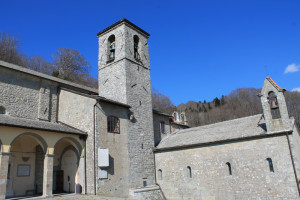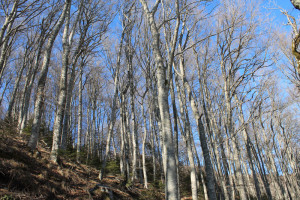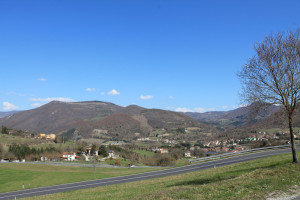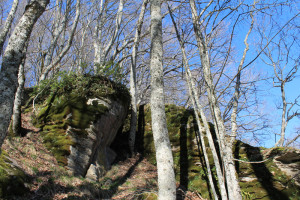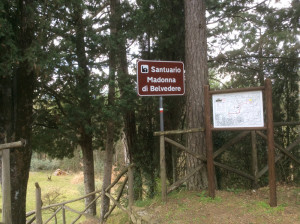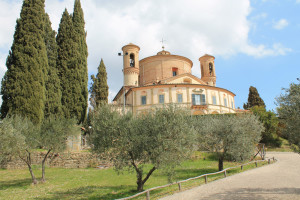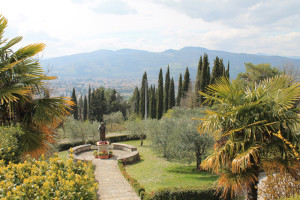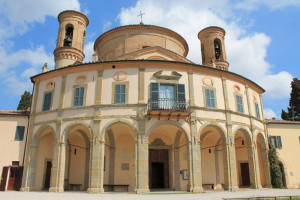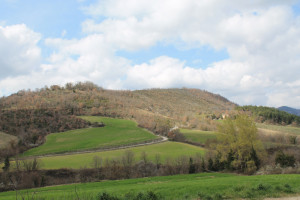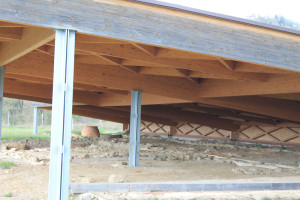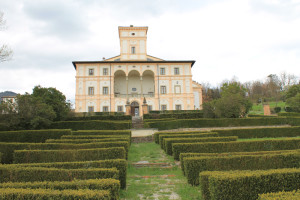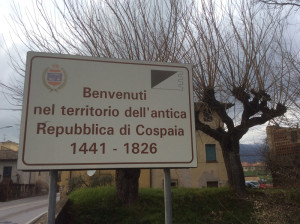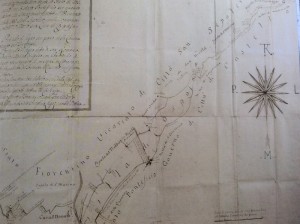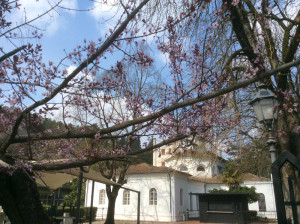“The landscape is amazing: imagine a boundless amphitheatre that only nature could create”,
– Pliny the Younger (61 – 113 AD) about Valtiberina
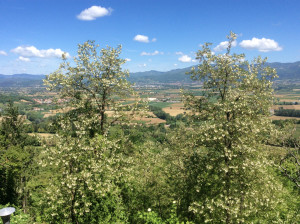
The Upper-Tiber Valley has a great number of various paths, like those rich in Franciscan lore, linking Assisi and La Verna, the two spiritual poles, where piety, along with art expressions, flourished in all the places that Saint Francis passed through.
The Sanctuary of La Verna (in Tuscany), where The Franciscan Trail begins. It crosses the region in 16 steps, through flourishing woodlands, farmed valleys, paths and places that inspired the saint.
If you like hiking, you’ll discover the untouched natural beauty of the valley with its fascinating history, towns, isolated abbeys, places where miracles took place, the ancient artworks inspired by peace message and love for all living creatures. As you walk, you can admire hillsides dotted with old stone farmhouses, beautiful churches, mountain streams and the amazing panoramas – a wonderful excuse to stop often, catch your breath, and snap some amazing photos.
The Baroque Sanctuary of Madonna di Belvedere, a short distance from Città di Castello (5 km following the SS Apecchiese). Built between 1669 and 1684 with a dome between the two majestic bell towers, it offers beautiful vistas of the town, the valley and the mountains of La Verna and Monte Acuto near Umbertide.
The imposing complex dominates the valley, like the Sanctuary of Canoscio, which I mentioned in another post. From a distance, it appears to me like the one from Raphael’s Marriage of the Virgin, which he painted in 1504 for the Church of St. Francis in Città di Castello.
Colle Plinio – Pliny’s home in the Upper Tiber Valley.
The remains of the ancient ‘Villa in Tuscis’ of Pliny the Younger, brought to light in the 1970s, along with its thermal plant – a Calidarium (hot bath), a Tepidarium (warm bath) and a Frigidarium (a large cold pool), as well as a temple of Ceres, harvest cellars, earthenware, etc.
Villa Magherini Graziani, a splendid example of the early 17th century architecture. This noble estate was completed in 1616 on commission by Carlo Graziani.
The villa houses a museum with numerous finds of the archaeological excavations carried out in 1974, ancient Roman mosaics, tiles and other objects of daily use are on display. Open on Sundays and holidays, tickets €3.
The Republic of Cospaia
For centuries the valley was subjected to the political and military interests of the main powers of Tuscany and Umbria. In 1441 when The Florentine Republic and The Papal States decided to define the borders, the little hill of Cospaia nestled between the two streams flowing into the Tiber, both named Rio and maximum 500 metres away from each other, wasn’t taken into account. This mistake granted the tiny republic (twenty times smaller than San Marino) independence, with no written laws, heads of the state, soldiers or taxes. Cospaia was so small that neither of the bordering powers would fight a war to conquer it. The Republic ran great deals with both the Grand Duchy of Tuscany and the Church. Its inhabitants lived independent lives for almost four centuries. An early centre for tobacco production (started in 1574), this small strip of land became the capital of Italian tobacco. Today, Cospaia is a hamlet of the comune of San Giustino.
Terme di Fontecchio, Città di Castello, 3 km away from the city centre. These thermal baths were already known in Roman times, when Pliny the Younger accompanied his wife Calpurnia to “maintain her beauty and grace”. Equipped with diagnostic and therapeutic centers, the Spa offers various treatments and genuine relaxation thanks to the properties of its sulphurous waters and mud.
